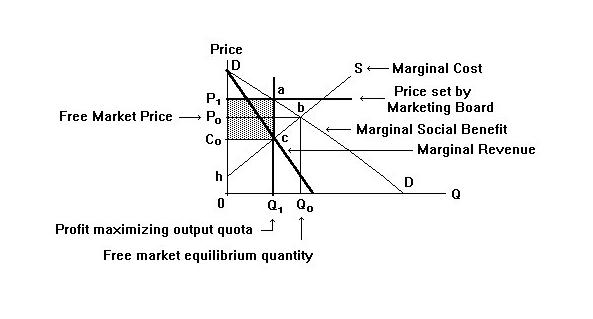
True or false?
The correct answer is true. Output is reduced below the free market level which, in the absence of externalities, is the output level that maximizes the combined producer and consumer rents. Since the rents to producers rise, consumer rents must fall---these rents are transferred from consumers to producers. At the same time the deadweight or efficiency loss is a loss of rent to consumers that is not captured by producers in cases where the supply of the product is perfectly elastic and a loss of both producer and consumer rents in cases where the supply is less than perfectly elastic.
An example of a case where the supply curve is less than perfectly elastic is given in the Figure below.

The free market price-output combination is at point b. The marginal cost of output is now the supply curve h S. Producers now capture only that portion of the shaded area above the line P0 b from consumers---the rest they capture from themselves. If the owner of the quota is not the owner of the resources that earn the producer rent, the shaded area below the line P0 b will be captured by quota-owner from the owner of the rent-earning resources. The entire shaded area will then represent producer and consumer rents captured by the quota owner. The area a b c is the deadweight loss. The portion above the line P0 b will represent lost consumer rent and the portion below that line will represent lost producer rent.